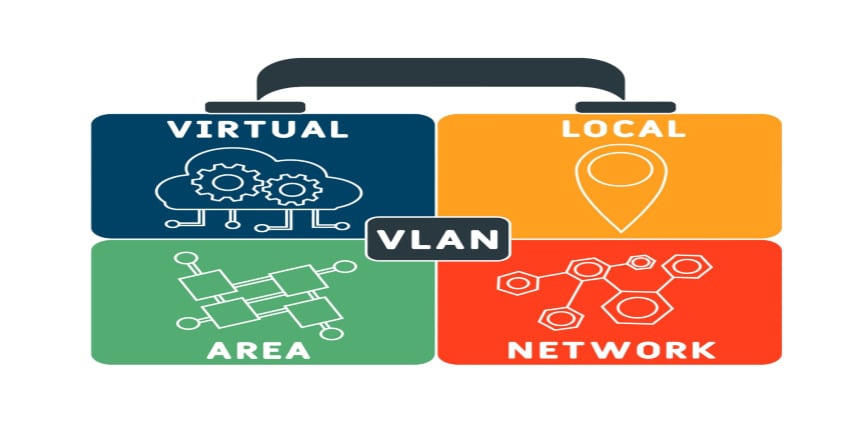VLAN Full Form
The full form of VLAN is Virtual Local Area Network. VLAN stands for virtual local area network. VLAN requires a manager for the subdivision of a LAN into different domain broadcasts. This device basically allows two or more devices in multiple networks to be combined into a single logical network. VLANs are very compatible to manage everything in an easy way and also create different sub-networks in small sizes. If the VLANs are not available then the central processing unit (CPU )will get overhead and also there would be a lack of network security. This will happen because, in absence of VLAN, there would be a broadcast through the host for all the devices.
- History of VLAN
- Features of VLAN
- Benefits of VLAN
- Limitations of VLAN

History of VLAN
VLAN is an upgraded version of Ethernet. There are points below show the development of Ethernet:
W. David Sincoskie discovered Ethernet. He took 4 years from 1981 to 1984.
Afterwards, Ethernet VLAN was discovered as the first model in 1998.
Earlier Ethernet was considered the fastest network which gives a speed of 10 Mbps(Megabits per second). In this broadcast network, no option was available for connecting multiple networks of Ethernet.
Connecting some networks was possible through the IP(Internet Protocol) routing process but it was too slow and costly.
Ethernet VLAN was developed in 1998.
Features of VLAN
VLAN is able to span on multiple switches.
Terminals of VLAN can easily relocate.
VLAN reduces security risk as the number of copies received through frames by hosts can create switches of the flood.
It holds private and sensitive data by creating separate hosts for separate VLANs and it has improved security.
Benefits of VLAN
Network administration adds more security to the field of network communication.
VLAN made expansion and relocation to network devices easier.
They also reduced network trafficking and with this, it gives better performance.
Earlier expensive routers were required to make communication in the devices but VLAN removes this kind of cost. Therefore it reduces total cost.
VLAN provides every broadcast network with a different domain. So that anonymous groups cannot obtain or view others' confidential data and information.
Limitations of VLAN
As VLAN can be connected to many devices through a single logical network, if one device is affected by a virus then other devices will also get affected.
It creates complexity in managing various larger networks.
Frequently Asked Questions (FAQs)
This device basically allows two or more devices of multiple networks to be combined into a single logical network. VLAN required the subdivision to perform various domains. This sub-division is called LAN.
Earlier Ethernet was considered the fastest network which gives a speed of 10 Mbps. In this broadcast network, no option was available for connecting multiple networks of Ethernet.
Three features of VLAN are:
Terminals of VLAN can easily relocate.
VLAN reduces the problem of the overflow of data for host channels.
It holds data privately, securely and separately which are coming from different host channels.
Two advantages are:
Earlier expensive routers were required to make communication in the devices but VLAN removes this kind of cost. Therefore it reduces total cost.
VLAN provides every broadcast network with a different domain. So that anonymous groups cannot able to obtain or view others' confidential data and information.
Two disadvantages are:
As VLAN can be connected to many devices through a single logical network, if one device is affected by a virus then other devices will also get affected.
It creates complexity in managing various larger networks.